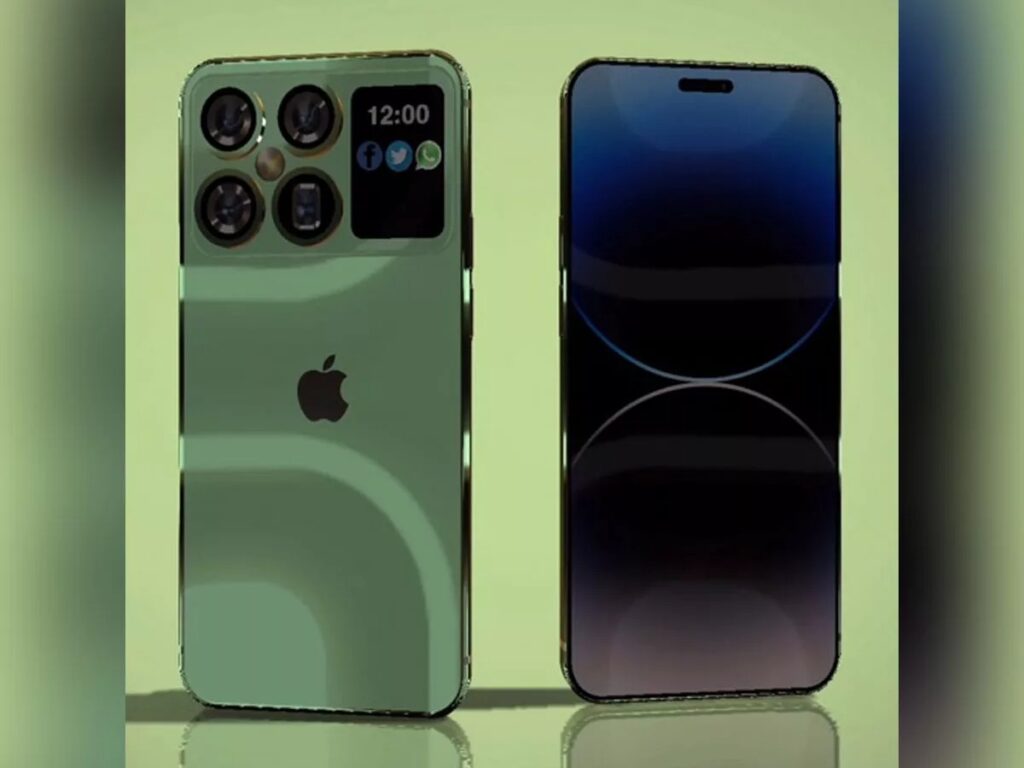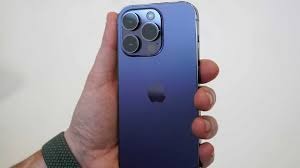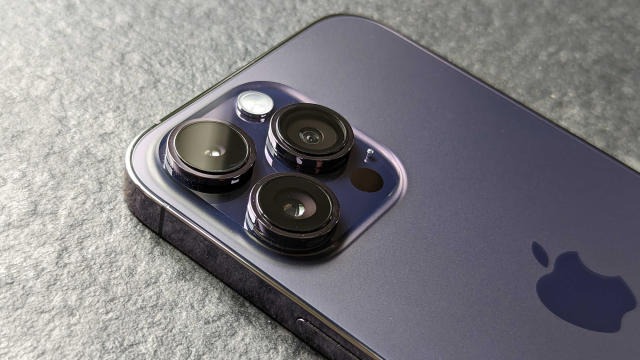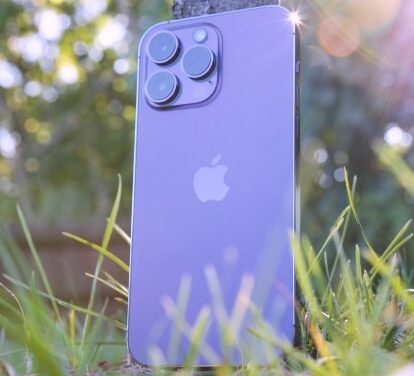iPhone 16Pro Max 2024 in the UAE, Dubai features & specs
The iPhone 16 Pro Max in the UAE, Dubai in 2024 is still unknown as the phone is not expected to be published until September 2024. The iPhone 16 Pro Max would likely be the flagship model in Apple’s iPhone lineup, succeeding the iPhone 15 Pro Max. Here are some speculative features and improvements it might have:

Design
Apple’s iPhone designs have consistently emphasized sleek and minimalist aesthetics. The devices often feature a glass and metal construction, with a front and back glass panel sandwiching a stainless steel or aluminum frame. The front of the phone usually includes a large, edge-to-edge display, with a small notch at the top that houses various sensors, including the front-facing camera and Face ID technology.
The rear side typically hosts the primary camera system, which can include multiple lenses for various photography capabilities. The arrangement and design of the camera module have evolved with each new iPhone iteration, showcasing Apple’s commitment to advancements in photography and computational imaging.
The buttons and ports on the device are thoughtfully placed for ease of use. Traditionally, iPhones include volume buttons, a mute switch, and a power button. The charging port has historically been a lightning port, although future models may transition to USB-C.
Display
Apple’s flagship iPhones often feature high-quality displays with vibrant colors, deep contrast, and sharp resolution. The display technology used by Apple is typically based on OLED (Organic light-emitting diode) or similar technologies that offer excellent brightness, color accuracy, and power efficiency.
Key features of iPhone displays often include:
- Resolution: Apple strives to provide high-resolution displays for a crisp and clear viewing experience. The resolution may vary between models, but they generally offer a high pixel density.
- ProMotion Technology: Some Pro models come with ProMotion technology, which allows for a higher refresh rate, typically 120Hz. This results in refined animated movies and more responsive touch input.
- HDR (High Dynamic Range): iPhones often support HDR content playback, providing a wider range of colors and improved contrast for a more immersive viewing experience.
- True Tone: True Tone technology adjusts the color temperature of the display based on ambient lighting conditions, providing a more natural and comfortable viewing experience.
- Notch: Historically, iPhones have featured a notch at the top of the display, housing sensors, and the front-facing camera for Face ID facial recognition.
- Size: iPhones are available in various sizes, and the Pro Max models usually have larger displays compared to standard or mini versions.
iPhone 16Pro Max 2024 in the UAE, Dubai features & specs
Camera
Apple’s flagship iPhones have been known for incorporating advanced camera technologies to enhance photography and videography capabilities. Some features commonly associated with iPhone camera systems include:
- Multiple Lenses: Recent iPhone models have featured multiple lenses, including wide, ultra-wide, and telephoto lenses. This setup allows users to capture a variety of perspectives and zoom levels.
- Night Mode: Apple has introduced Night Mode to enhance low-light photography. This feature utilizes computational photography to capture detailed and well-exposed images in low-light conditions.
- Deep Fusion and Smart HDR: These technologies optimize image processing to capture a high level of detail and dynamic range, especially in challenging lighting scenarios.
- ProRAW and ProRes Video Recording: ProRAW is a feature that allows users to capture images in a raw format for more extensive post-processing control. ProRes video recording provides professional-level video capture capabilities.
- LiDAR Scanner: The LiDAR (Light Detection and Ranging) scanner is used for improved autofocus in low-light conditions and enhanced AR (Augmented Reality) experiences.
- Improved Computational Photography: Apple has consistently focused on utilizing computational photography techniques to enhance image quality, including features like Smart HDR and advanced Portrait Mode effects.

Storage
Apple usually offers a range of storage options to cater to different user needs. The storage configurations for iPhone models typically include:
- Base Storage: iPhones are typically available with a base storage option, which might be 64GB or higher. This entry-level storage is suitable for users with basic storage needs, such as casual app usage and minimal media storage.
- Mid-Tier Options: Apple often provides mid-tier storage configurations, such as 128GB or 256GB, offering users more space for apps, photos, videos, and other data.
- High-End Configurations: For users with higher storage requirements, Apple usually offers models with larger storage capacities, such as 512GB or 1TB. These configurations are suitable for users who store large amounts of media, use resource-intensive applications, or prefer not to rely heavily on cloud storage.
It’s important to note that the actual storage available to users is less than the total storage capacity due to system files and pre-installed software. Additionally, the availability of specific storage configurations may vary based on the iPhone model.
Processor
Apple has been using its custom-designed processors, often referred to as “A-series chips,” in its iPhones. As for the iPhone 13 series, the latest processor was the A15 Bionic chip. Here are some characteristics of the A15 Bionic chip, which may give you an idea of the kind of advancements Apple tends to make with its processors:
- Performance: Apple’s A-series chips are known for delivering high-performance capabilities. The A15 Bionic, for example, was designed to provide improved CPU and GPU performance compared to its predecessors.
- Efficiency: Apple focuses on both performance and energy efficiency. The A15 Bionic chip, like its predecessors, is built using advanced semiconductor technology to optimize power consumption.
- Neural Engine: Recent iPhone processors include a dedicated Neural Engine for handling machine learning and artificial intelligence tasks. This enhances features like facial recognition (Face ID), computational photography, and various AI-driven applications.
- Image Signal Processor (ISP): The ISP is responsible for handling image processing tasks for the camera system, contributing to the device’s overall photography capabilities.
- Security: Apple’s processors incorporate security features, including a Secure Enclave, which is a dedicated coprocessor for handling sensitive data like biometric information and encryption keys.
For the iPhone 16 Pro Max, if it exists, Apple would likely introduce a new and more advanced processor to further improve performance and efficiency.
Battery
Apple designs its iPhones with a focus on both performance and energy efficiency. Aiming to provide users with a balance between powerful capabilities and a reasonable battery life. Key factors related to iPhone batteries include:
- Battery Capacity: Apple usually specifies the battery capacity in milliampere-hours (mAh) or watt-hours (Wh). The larger the capacity, the more energy the battery can store, potentially leading to longer usage times.
- Optimization: Apple optimizes its hardware and software to ensure efficient power usage. iOS is designed to manage background processes and system resources intelligently to conserve battery life.
- Fast Charging: Recent iPhone models support fast charging, allowing users to quickly recharge their devices. This feature is useful for users who need a rapid boost in battery level.
- Wireless Charging: Many recent iPhones support wireless charging, enabling users to charge their devices by placing them on compatible wireless charging pads.
- Battery Health Management: iOS includes features to help maintain the long-term health of the battery. This includes optimizing charging based on usage patterns to reduce the overall aging of the battery.
For the iPhone 16 Pro Max, if it exists, Apple would likely continue to enhance battery technology to improve overall performance and provide users with a satisfactory battery life. The specific details about the battery capacity, charging capabilities, and other related features would be available in the official specifications provided by Apple at the time of the product’s release.

Connectivity
The iPhone 16 Pro Max excels in connectivity. Offering a comprehensive range of features to keep you seamlessly connected in today’s fast-paced world.
Wireless Connectivity:
- Wi-Fi: iPhones support the latest Wi-Fi standards, providing fast and reliable wireless internet connectivity. The specific Wi-Fi standards supported may vary based on the iPhone model.
- Bluetooth: iPhones come equipped with Bluetooth technology for wireless communication with other Bluetooth-enabled devices, such as headphones, speakers, and accessories.
- 5G Connectivity: Recent iPhone models, including the iPhone 13 series, support 5G networks for faster data speeds and improved network performance.
- Cellular Connectivity:
- LTE: iPhones typically support LTE (Long-Term Evolution) for high-speed cellular data connectivity.
- eSIM and Dual SIM: Some iPhone models offer eSIM technology, allowing users to activate a cellular plan without a physical SIM card. Additionally, certain models support dual SIM functionality. Enabling users to use two phone numbers on the same device.
- Location Services:
- GPS and GLONASS: iPhones include built-in GPS (Global Positioning System) and GLONASS (Global Navigation Satellite System) for accurate location tracking.
- Ultra-Wideband (UWB): Recent models feature UWB technology for precise spatial awareness and improved location-based applications.
- Physical Ports:
- Lightning or USB-C: iPhones traditionally use a Lightning port for charging and data transfer. Apple has been transitioning some products to USB-C. The specific port type may vary based on the iPhone model.
- NFC (Near Field Communication):
- iPhones support NFC for contactless payments using services like Apple Pay and for quick pairing with other NFC-enabled devices.
- AirPlay and AirDrop:
- AirPlay: Allows wireless streaming of audio and video to compatible devices, such as Apple TV.
- AirDrop: Enables quick file sharing between Apple devices nearby.
iPhone 16Pro Max 2024 in the UAE, Dubai features & specs
FAQs
Recommend checking the official Apple website or trusted tech news sources. Apple typically announces key features, specifications, and other details during their product launches or through official press releases.
Based on rumors and leaks, the starting price in the UAE is expected to be around AED 6,499.
Most likely 128GB mirroring the current Pro model base storage. 256GB and 512GB are highly likely as these are popular choices and offered in the current iteration. Apple might introduce a 1TB variant in the Pro Max line.
Equipped with advanced wireless technologies, including 5G support.
